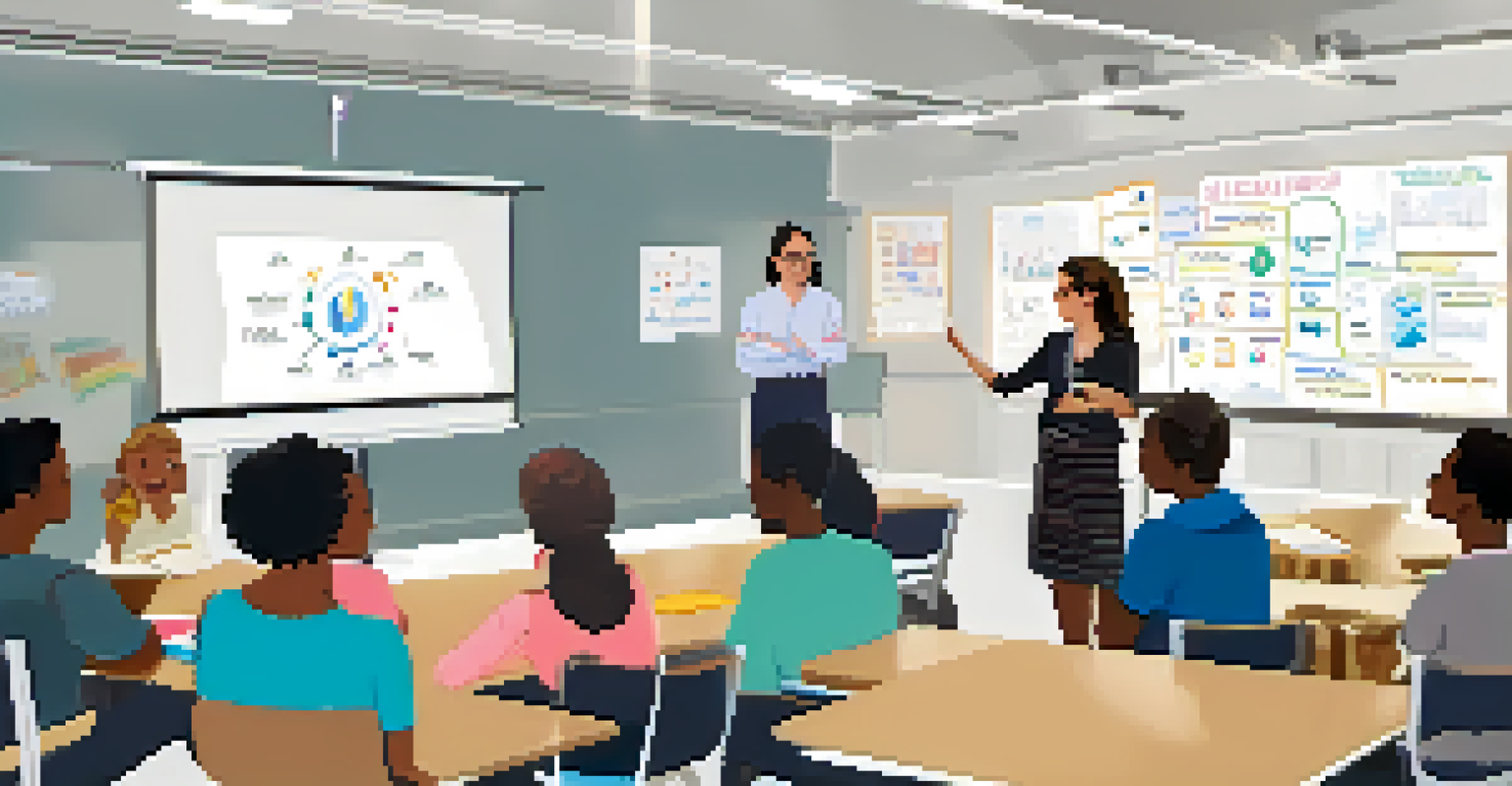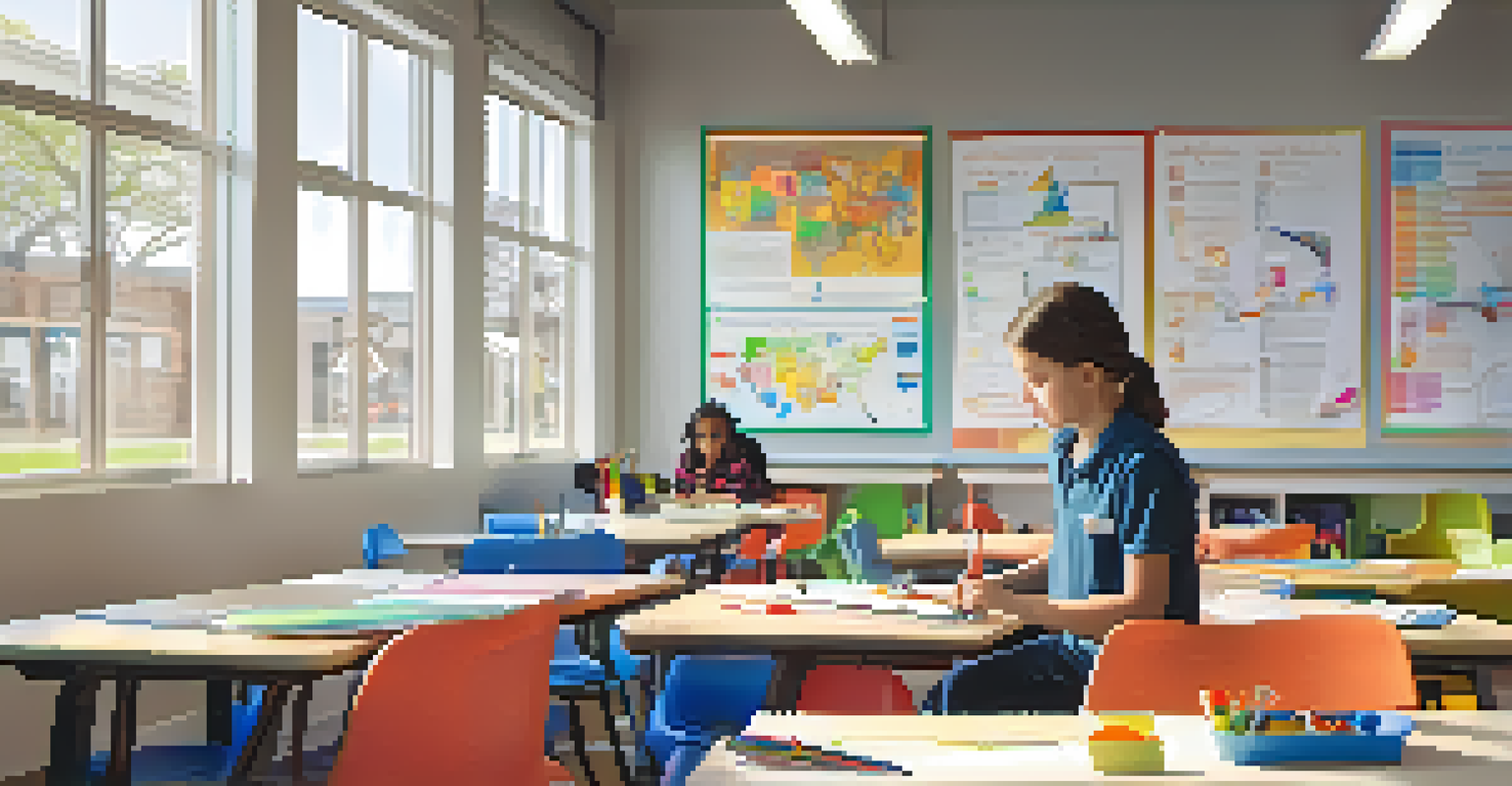How to Create an Adaptive Learning Culture in Schools

Understanding Adaptive Learning: What It Means for Schools
Adaptive learning is an educational approach that personalizes learning experiences based on the individual needs of students. It recognizes that each learner is unique, with varying strengths, weaknesses, and pace of learning. By tailoring the educational experience, schools can help all students reach their full potential, ensuring no one is left behind.
The greatest gift we can give our children is the opportunity to learn in a way that meets their individual needs.
This method often involves technology, such as learning management systems that adjust content in real-time based on student performance. However, adaptive learning is not solely about technology; it's also about fostering a mindset that values flexibility and responsiveness in teaching and assessment. Embracing this philosophy can transform the way educators engage with their students.
Ultimately, understanding adaptive learning is the first step toward creating a culture that prioritizes student-centered education. It encourages collaboration among educators, students, and even parents, all working together to support individualized growth. This collaborative spirit lays the groundwork for a thriving adaptive learning environment.
Key Components of an Adaptive Learning Culture
To cultivate an adaptive learning culture, schools need to focus on several key components: personalized learning pathways, ongoing assessments, and supportive technology. Personalized learning pathways allow students to progress at their own pace, fostering independence and ownership over their education. This approach also encourages them to set personal goals and track their progress.

Ongoing assessments, both formative and summative, play a crucial role in adaptive learning. They help educators identify students’ strengths and areas for improvement, enabling targeted interventions. Regular feedback keeps students informed about their progress and motivates them to stay engaged in their learning journey.
Personalized Learning Pathways
Adaptive learning allows students to progress at their own pace, fostering independence and ownership over their education.
Finally, supportive technology is essential in facilitating adaptive learning. Tools like interactive software, data analytics, and learning management systems can provide valuable insights into student performance. When implemented effectively, these technologies can enhance the learning experience and empower educators to make informed decisions.
Creating a Supportive Environment for Adaptive Learning
A supportive environment is vital for fostering an adaptive learning culture. This includes cultivating a positive school climate where students feel safe to express their thoughts and take academic risks. When students are comfortable in their environment, they are more likely to engage deeply with the materials and take ownership of their learning.
Education is not the filling of a pail, but the lighting of a fire.
Additionally, professional development for educators is crucial. Teachers should receive training on adaptive learning strategies and how to implement them effectively in the classroom. Ongoing support and collaboration among staff can also promote a shared understanding of adaptive learning principles, leading to a more cohesive approach.
Lastly, involving parents in the adaptive learning journey can strengthen the support system for students. Schools can host workshops or information sessions to educate parents about adaptive learning methods. When families understand and support these initiatives, it reinforces the importance of individualized learning at home.
Utilizing Technology Effectively in Adaptive Learning
Technology plays a pivotal role in implementing adaptive learning strategies in schools. Learning management systems, for instance, can track student progress and suggest tailored resources. By utilizing these tools, educators can create a more personalized learning experience that meets individual student needs effectively.
However, it’s essential to choose the right technology that aligns with educational goals. Not every tool will fit every school’s needs, so thorough research and trials are necessary before implementation. This ensures that the technology enhances learning rather than complicates it.
Collaboration Among Educators
Working together, educators can share insights and strategies, enhancing teaching practices and fostering a supportive community.
Moreover, ongoing training for both educators and students on how to use these technologies is crucial. When everyone is comfortable with the tools, the chances of successful implementation increase significantly. This comfort level also encourages students to take advantage of the resources available to them.
Encouraging Collaboration Among Educators
Collaboration among educators is a cornerstone of a successful adaptive learning culture. When teachers work together, they can share insights, strategies, and resources that benefit the entire student body. This kind of teamwork not only enhances teaching practices but also fosters a sense of community among staff.
Regular collaborative meetings, workshops, or peer observation sessions can help educators refine their adaptive learning techniques. These interactions promote a culture of continuous improvement, where teachers learn from one another and adapt their methods based on shared experiences. It’s about creating a support network that encourages innovation and experimentation.
Additionally, educators can work together to create interdisciplinary projects that incorporate adaptive learning principles. By designing collaborative lessons across subjects, they can provide students with a more cohesive learning experience. This not only enriches the curriculum but also showcases the interconnectedness of different fields of study.
Engaging Students in Their Own Learning Process
Engaging students in their learning process is crucial for an adaptive learning culture. When students are active participants in their education, they are more likely to take ownership and responsibility for their learning. This engagement can be fostered through goal-setting exercises where students identify their interests and aspirations.
Moreover, providing opportunities for student feedback can enhance engagement. When students feel that their voices are heard and valued, they are more likely to invest in their learning journey. This feedback loop can inform educators about what works and what doesn’t, leading to continuous improvements in teaching practices.
Engaging Students Actively
Involving students in their learning process through goal-setting and feedback fosters ownership and increases motivation.
Incorporating project-based learning and real-world applications can also captivate students’ interests. When learners see the relevance of their studies to their lives, they become more motivated to pursue their education actively. This connection between learning and real-world scenarios is a powerful driver of engagement.
Measuring Success: Assessing Adaptive Learning Outcomes
Measuring the success of an adaptive learning culture involves more than just test scores; it requires a comprehensive assessment of various outcomes. Educators should look at student engagement, satisfaction, and overall growth to gauge the effectiveness of adaptive learning strategies. These qualitative measures often provide deeper insights into student experiences.
Using data analytics tools can help schools track progress over time. By analyzing trends and patterns, educators can identify which adaptive strategies are working and which may need adjustments. This data-driven approach ensures that schools remain responsive to students' needs and can fine-tune their methods accordingly.

Moreover, celebrating achievements, both big and small, can motivate students and recognize their hard work. Acknowledging progress fosters a positive learning environment and encourages students to strive for continuous improvement. When success is measured holistically, it reinforces the value of adaptive learning in nurturing well-rounded individuals.